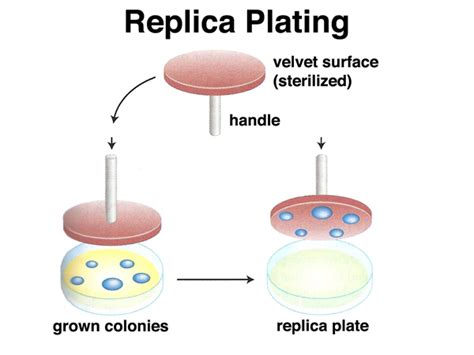how to clean replica cloth biology | how to replicate velvet how to clean replica cloth biology The problem is to find out these phage resistant mutants from within the confluent lawn of cells and to isolate it. This is accomplished by replica plating method. Principle: Using the threads of . LV Initials 40mm Reversible Belt - Luxury Damier Graphite Canvas Grey | LOUIS VUITTON. M0213U. LV Initials 40mm Reversible Belt. £430.00. Colours Graphite. Size. Item Unavailable. Check In-Store Availability. Product Details. Complimentary Delivery & Returns. Gifting. LV Initials 40mm Reversible Belt. £430.00. Item Unavailable. Get the .
0 · replica plate colonization
1 · how to replicate velvet
Shop Women's Louis Vuitton Size OS Belts at a discounted price at Poshmark. Description: Authentic guarantee In beautiful condition. Sold by bill_rose29. Fast delivery, full service customer support. . LOUIS VUITTON Belt - LV Initial 40MM Reversible Monogram Eclipse Canvas M9043 $1,127 $1,409 LOUIS VUITTON BELT $395 $1,150 .
To reduce cell-debris transfer, print to a minimal-media replica first, then discard it. To vastly reduce cell-debris transfer, make a minimal media replicate, then immediately use that replicate as a master.
The problem is to find out these phage resistant mutants from within the confluent lawn of cells and to isolate it. This is accomplished by replica plating method. Principle: Using the threads of .
Replica plating is an experimental technique that uses a printing-like transfer employing fabric with a pile (e.g., velveteen) to make multiple copies of an original culture plate with each microbial .Before using the Replica-Plating Tool, disinfect it with a brief rinse of 70% ethanol or 0.025% bleach (1 part bleach to 200 parts water). Cotton velveteen squares 6” x 6” (152mm) should be .Clean cloths can be stacked with the printing side facing down, wrapped in bulk with aluminum foil, and autoclaved. Contaminated cloths can be autoclaved, washed with water (no . Replica plating is a method that permits simultaneous screening of a large number of microorganisms. For instance, after mutagenizing a culture of wild-type cells, one can .
replica plate colonization
To replica plate, invert the master plate, the one with the yeast on it, over the velveteen on the holder and press the plate firmly against the sterile fabric surface. Then .
The application of Replica plating is to reproduce identical spatial colonies pattern in new plate. It is also used for isolation of genetic variant or antibiotic resistant. This can be . By preparing replica plates at different growth temperatures or in the absence of specific nutrients, temperature-sensitive mutants and nutrient auxotrophs can be isolated. .
Replica plating is the technique by which each colony/clone is inoculated onto multiple plates according to a numbered scheme. This method allows each clone to be tested . To reduce cell-debris transfer, print to a minimal-media replica first, then discard it. To vastly reduce cell-debris transfer, make a minimal media replicate, then immediately use that replicate as a master.
how to replicate velvet
The problem is to find out these phage resistant mutants from within the confluent lawn of cells and to isolate it. This is accomplished by replica plating method. Principle: Using the threads of velvet or chamios leather which act as inoculating needles, the mutants can be replicated and isolated. Requirements: 1.
Replica plating is an experimental technique that uses a printing-like transfer employing fabric with a pile (e.g., velveteen) to make multiple copies of an original culture plate with each microbial colony identified by its position on the culture plate.Before using the Replica-Plating Tool, disinfect it with a brief rinse of 70% ethanol or 0.025% bleach (1 part bleach to 200 parts water). Cotton velveteen squares 6” x 6” (152mm) should be prepared by stacking in an autoclave on kraft paper or loose aluminum foil.Clean cloths can be stacked with the printing side facing down, wrapped in bulk with aluminum foil, and autoclaved. Contaminated cloths can be autoclaved, washed with water (no detergent), dried, and re-autoclaved for future use. Replica plating is a method that permits simultaneous screening of a large number of microorganisms. For instance, after mutagenizing a culture of wild-type cells, one can spread-plate dilutions of the culture to obtain plates with single colonies.
To replica plate, invert the master plate, the one with the yeast on it, over the velveteen on the holder and press the plate firmly against the sterile fabric surface. Then slowly peel the plate off, leaving a replica or print of the cell pattern on the velveteen. The application of Replica plating is to reproduce identical spatial colonies pattern in new plate. It is also used for isolation of genetic variant or antibiotic resistant. This can be done by comparing the master or primary plate with the secondary one.
By preparing replica plates at different growth temperatures or in the absence of specific nutrients, temperature-sensitive mutants and nutrient auxotrophs can be isolated. Animal cell colonies grow onto various supports, including filter paper and cloth of woven polyester. Replica plating is the technique by which each colony/clone is inoculated onto multiple plates according to a numbered scheme. This method allows each clone to be tested by a variety of methods, while retaining a master plate from which clones can be picked.
To reduce cell-debris transfer, print to a minimal-media replica first, then discard it. To vastly reduce cell-debris transfer, make a minimal media replicate, then immediately use that replicate as a master.
The problem is to find out these phage resistant mutants from within the confluent lawn of cells and to isolate it. This is accomplished by replica plating method. Principle: Using the threads of velvet or chamios leather which act as inoculating needles, the mutants can be replicated and isolated. Requirements: 1.Replica plating is an experimental technique that uses a printing-like transfer employing fabric with a pile (e.g., velveteen) to make multiple copies of an original culture plate with each microbial colony identified by its position on the culture plate.Before using the Replica-Plating Tool, disinfect it with a brief rinse of 70% ethanol or 0.025% bleach (1 part bleach to 200 parts water). Cotton velveteen squares 6” x 6” (152mm) should be prepared by stacking in an autoclave on kraft paper or loose aluminum foil.Clean cloths can be stacked with the printing side facing down, wrapped in bulk with aluminum foil, and autoclaved. Contaminated cloths can be autoclaved, washed with water (no detergent), dried, and re-autoclaved for future use.

Replica plating is a method that permits simultaneous screening of a large number of microorganisms. For instance, after mutagenizing a culture of wild-type cells, one can spread-plate dilutions of the culture to obtain plates with single colonies. To replica plate, invert the master plate, the one with the yeast on it, over the velveteen on the holder and press the plate firmly against the sterile fabric surface. Then slowly peel the plate off, leaving a replica or print of the cell pattern on the velveteen. The application of Replica plating is to reproduce identical spatial colonies pattern in new plate. It is also used for isolation of genetic variant or antibiotic resistant. This can be done by comparing the master or primary plate with the secondary one. By preparing replica plates at different growth temperatures or in the absence of specific nutrients, temperature-sensitive mutants and nutrient auxotrophs can be isolated. Animal cell colonies grow onto various supports, including filter paper and cloth of woven polyester.

LV Pixel 40mm Reversible Belt. $825.00. More. LOUIS VUITTON Official Canada site - Discover our latest Men's LV Buckles collections, exclusively on louisvuitton.com and in Louis Vuitton Stores.
how to clean replica cloth biology|how to replicate velvet



























